Brian Noll Shows the Power of Timing with This Amazing Shot!
We’re streaming daily on Apple Podcasts, Google Podcasts, Stitcher, Pocket Casts, and Spotify! You can also listen to it right here on The Phoblographer.
“I can’t tell you how many times I have missed the perfect lightning shot”, confesses New York-based cityscape photographer Brian Noll. He started out inspired by urbex photography but gravitated towards nightscapes and city shots after some years. Having switched camera brands recently means he’s still building up his arsenal of lenses and does most of his work with a few lenses and one tripod.
I’ve traveled to NYC twice in my lifetime. All I wanted to do in the four weeks I spent there was photograph its streets and the New York skyline from Jersey. I can’t quite explain the pull that this city has over me. I used to wake up at unearthly hours to get to good vantage points for sunrise. Every turn on every street proved to be a photographic opportunity. I still can’t get enough of it, and every time I plan a trip overseas, I always think to myself if I can make a side trip to the Big Apple somehow.
If you’re an NY-based photographer, you know exactly what I’m talking about. At sunset, the shimmer on the evening skyline can’t explain it in words when viewed from Edgewater, New Jersey. I’ll never forget the generosity and hospitability of complete strangers when I visited the city for the first time.
The skyline has changed a fair bit in the seven years since my last trip. That’s reason alone to plan another trip there, right? Maybe this time, I’ll try my luck at doing some nightscapes the way Brian does. His good work shows me that there are still several vantage points I need to place my camera in.
Want to get your work featured? Here’s how to do it!
The Essential Photo Gear Used by Brian Noll
Brian told us:
While I was in the Nikon world, my lens collection covered every focal point range from 11mm to 200mm. I became very comfortable being able to walk around, see something and know which lens I could use to get the vision of what I was seeing, whether it was the distortion of a wide angle lens or the tight crop of a zoom lens. In the summer of 2019 I came across a deal on a Sony A7iii that I couldn’t pass up so that was the kick to finally switch over, which I am still shooting with to this day
The Phoblographer: Please tell us about yourself and how you got into photography.
Brian Noll: I’ve always had an interest in photography. My mom used to take a lot of pictures when I was younger, which probably rubbed off onto me. A lot of my photography interest has come from either seeing photos in stores or photos that other people took and then thinking, “Hey, I can take a photo like that”. This ranged from anything as simple as the dune grass on a beach, a sunset or the hustle and bustle of a cityscape. I am from New Jersey, so I am pretty close and exposed to many different environments – within an hour, you can be on a beach, in a city, on a mountain or out in the middle of the woods. In 2014 I put down the point and shoot camera and got my first DSLR which really expanded the possibilities into the world of photography.

The Phoblographer: What drew you to capturing cityscapes?
Brian Noll: When I was getting into photography, the big thing on Instagram was Urban Exploration and Rooftopping. These were either mostly kids exploring abandoned subway tunnels underground or accessing skyscraper rooftops (often with photos of their feet dangling over the edge). I might be biased since this is what I was most exposed to when I was starting out, but I feel this era of photography merged with and shaped a lot of editing styles that we still see today. In the photography realm, the perfect storm of Instagram emerging, cameras becoming more accessible/cheaper and with greater capabilities, and the advancement of editing programs helped push a new generation.
I was drawn to city photos because I was constantly seeing all the works that were being posted or that my friends took. Cities allow for a vast amount of vantage points, and everybody sees things differently. Due to everybody’s own style or eye, no two photos were ever the same – even when the photos were taken at the same time and place. Cities are constantly evolving and moving, allowing you to stay on your toes.
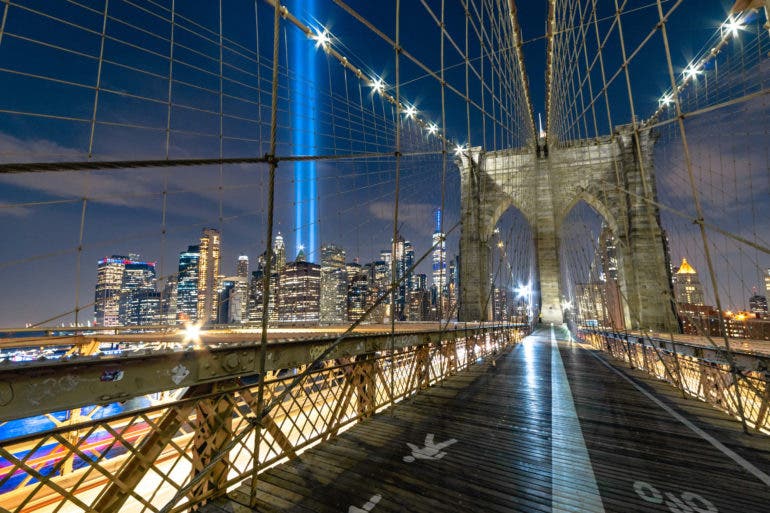
The Phoblographer: What camera gear do you use for your work?
Brian Noll: My first DSLR was a Nikon D40 that I had bought off my friend who was also getting into photography and was upgrading his gear. As I progressed, the gear bug bit me, and I traded up through some of the Nikon D3000 series. Eventually, I landed on the Nikon D5500 that I loved. While I was in the Nikon world, my lens collection covered every focal point range from 11mm to 200mm. I became very comfortable being able to walk around, see something and know which lens I could use to get the vision of what I was seeing, whether it was the distortion of a wide-angle lens or the tight crop of a zoom lens.
While I had become comfortable with my setup, I was still using a crop sensor camera. I was able to get all the shots I wanted and didn’t really feel limited by any means, but the rave has always been about not only full-frame cameras but now also mirrorless cameras. In the summer of 2019, I came across a deal on a Sony A7iii that I couldn’t pass up, so that was the kick to finally switch over, which I am still shooting with to this day. Switching to Sony also meant all my Nikon lenses were not compatible without the use of adapters, which I did not want to use. I have not built up my lens collection as quick with Sony, as I want to be smart and really only get the lenses I need to get the shots I want. Besides the body and lenses, I run pretty lean in the gear end of things. I rely on a tripod for long exposures or when needed. I have a flash, but I rarely use it or bring it with me. My post-processing is done in Lightroom, with a touch of Photoshop if there is something that Lightroom cannot handle.
The Phoblographer: A lot of prep goes into lightning images, but isn’t there also a great deal of luck involved? Do you get a lot of keepers when you head out for this?
Brian Noll: I agree that there is a great deal of luck involved with getting lightning images; however, there is prep work that goes into it. As one might imagine, the weather conditions are not ideal. You must think of what shot you want to capture – you can only point your camera in one direction. Where can you capture this shot from? Lightning commonly comes with a storm which means wind and rain – is there a spot you can be sheltered and still get the shot? Lightning doesn’t constantly strike, if at all, which creates the challenge of tuning in your camera settings to actually capture it.
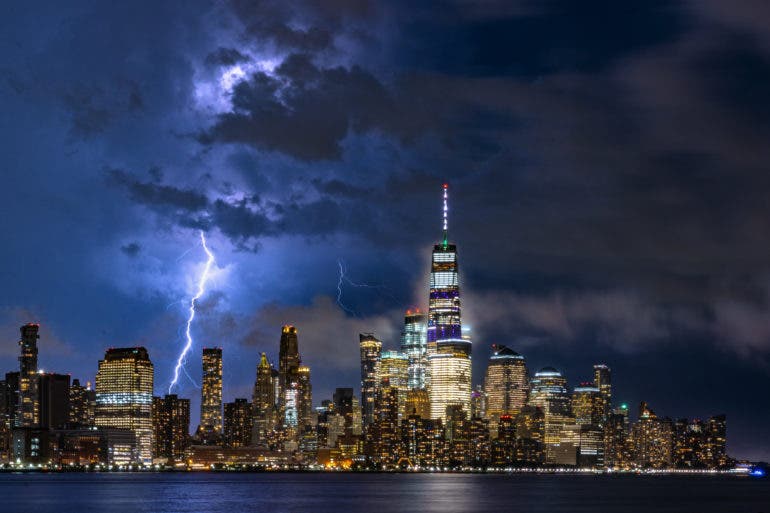
You cannot simply just put settings for the darkness of the storm since the flash of the lightning will throw off all those settings. After all that, you might have the luck of getting the shot while your shutter was actually open. I can’t tell you how many times I have missed the perfect lightning shot while either I was adjusting settings, in between taking photos, reviewing if I got anything, or thinking no more lightning was going to strike!
The Phoblographer: Tell us more about the images of the lightning strike. What emotions did you go through as you reviewed the images, or were you sure you would be getting those shots that night?
Brian Noll: The first thing I do when I see the lightning strike is to look at my camera and hope that the shutter is open and getting it. When I look over and see the black screen, which is telling me the shutter is still open taking it, I am glued to the screen waiting to see if I got it, if the bolt was actually visible, if the settings are sufficient and that things are actually in focus! Nothing is guaranteed until that moment.

Once I see the preview revealed showing that I actually got it, a rush of victory ensues. I usually transfer that shot to my phone just in case something happens to my camera, but more importantly, actually see it better! The hassles of being out in unideal weather conditions or seeing blank shot after blank shot go away when you see the rewarding capture. I usually hope to catch lightning actually striking something, but I am still in awe regardless and happy to get anything in general.
I find storms interesting, and mother nature can really show us how in charge she is at any given notice. Photos of lightning striking in New York City have been part of my bucket list shots to get, and I’m happy to have captured some, but I plan to get many more in the future!
The Phoblographer: On both trips to NYC in my life, I made sure to get to the Hyatt Jersey just to get that view of the skyline. What vantage spots do you enjoy?
Brian Noll: The best views of NYC are outside of NYC. You really can’t go wrong with Jersey City, Hoboken, and Weehawken. It is actually pretty crazy how you can move a couple streets, and everything looks completely different. As you move, different sections of Manhattan become more prominent as well, each with their own iconic buildings. Brooklyn also offers great views of Manhattan; however I usually stick to the NJ side since it requires less traveling for me.

The Phoblographer: Nightscapes seem to be your forte, but you’ve also got some crazy pink and orange sky images. Is there a significant bit of planning that goes into getting these shots? Tell us more about them.
Brian Noll: A sunrise or sunset is a great start or end to your day. While there can be planning that goes into shooting them, I like to carve out sometime if I can to see them. No two are ever the same, and it’s a nice break from whatever you were doing in your day. Now I usually just throw my camera in my bag and take it with me if I am going to be out. Sometimes I am pleasantly surprised with a sky that explodes, even if just for a few quick minutes.

The Phoblographer: What is it about the NYC skyline that keeps drawing you back to capture it? Do you change things around to ensure the images don’t seem too repetitive?
Brian Noll: I do run into repetitiveness as I find myself sometimes shooting the same things over and over again. However, New York City is constantly evolving and offers all types of architectural styles that suit many different flavors, from skyscrapers to gothic, modern, and brownstones. All it takes sometimes is going to a different location or looking at things in a different way.
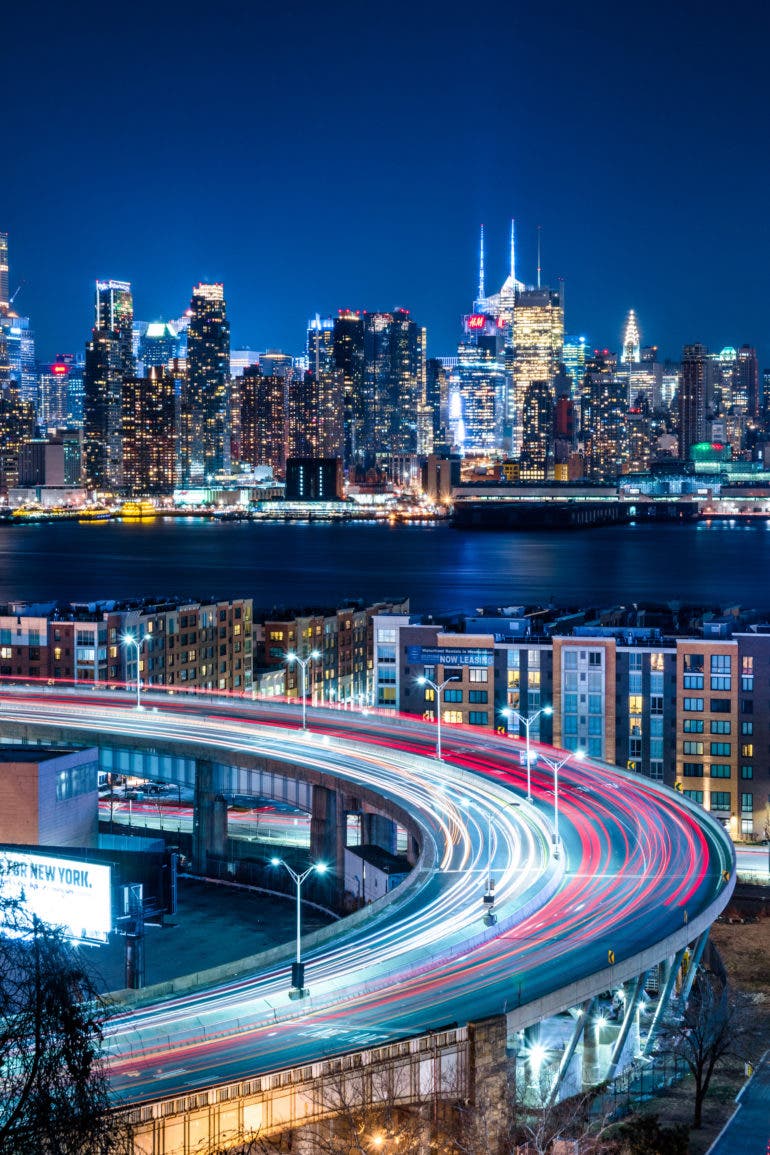
The Phoblographer: Is it common for you to be standing at one spot for hours to get the ‘ideal shot’? If things don’t work out over there, what do you do to feel inspired again?
Brian Noll: I can definitely be at a spot or area for a long time. Not necessarily for the ‘ideal shot’, but many things might change while at a location. If I am at a sunrise or sunset, the sky is constantly changing and might be getting better and better. Things don’t change as much at night, but with taking longer exposures, then reviewing and seeing what might need to be adjusted adds to the time frame. If things don’t work out, I am not too affected; photography for me, is a hobby. Alongside taking the photos, sometimes I am also just hanging out, listening to music and enjoying the view.
Inspiration easily comes from the internet, whether that be Instagram, TikTok, Youtube or photography websites. This might spark an idea or expose me to something I haven’t done before or never seen before. I find shooting with friends is also a great way to get out of normal photography routine habits.
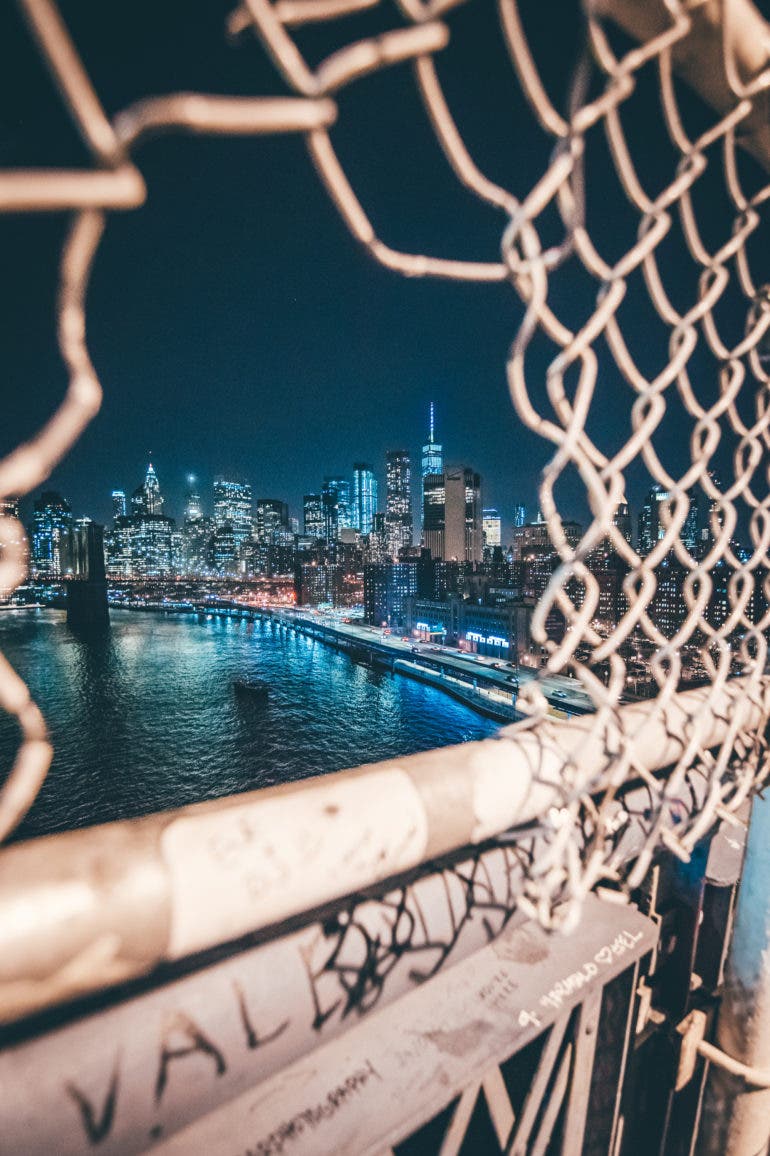
The Phoblographer: How can photographers stand out (in terms of their work), especially with so many of us having cameras these days and shooting the same cities from the same spots?
Brian Noll: It may sound clichéd but shoot what you like or what makes you happy. There are times I will post a photo that I really like, and it might not get many likes. On the flip side, sometimes I will post a picture that I am not a fan of, and it gets way more attention. In the end, likes don’t matter and may even end up limiting what you try to do. But I’m not going to lie; it can be tough to stand out sometimes. Do you know how many people take pictures of the Empire State Building or World Trade Center every single day, all day? If it is out there, someone has probably taken a similar photo of it, yet for me, there are still plenty of things I want to shoot no matter how many people have done it already. This is because I haven’t shot it, and I want my own shot of it. Just because something may have been shot to death – it hasn’t been from your eye, your style or your edit.

Did city photography slow down a lot since last year? What did you take up to keep your camera busy during this?
Brian Noll: Due to covid and lockdowns this past year, my photography did slow down. With a lot of time to kill, I tried to expand or discover different shooting and editing techniques by either watching videos or just trying new things. This extra time also allowed me to go back through some of my old photos and try new procedures on them. Most importantly, I was able to go through some of my backlog of photos!
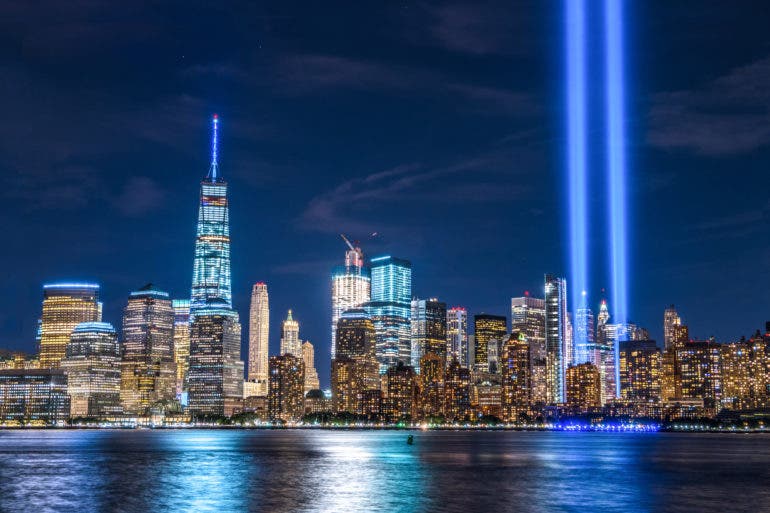
All images provided by Brian Noll. Used with permission. Check out his website and Instagram page to see more of his cityscapes.